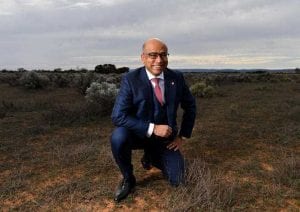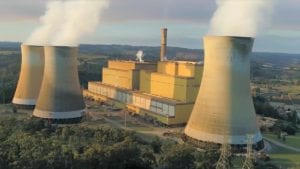Energy minister Angus Taylor is using a series of bilateral deals to implement a national electricity strategy. From a policy development perspective, we think this is one of the worst ways possible to develop strategy.
That’s because:
(1) Mr Taylor doesn’t have to disclose what the policy is;
(ii) there is no supporting documentation, that is the business or other case for the policy is not justified in any policy document;
(iii) the costs and benefits of the policy are unknown. A good example is this new emphasis on gas. Surely, the electricity industry is entitled to understand why gas, seemingly a scarce and expensive product in Australia, is suddenly the answer to Australia’s electricity problems.
Let’s recall that the minister was faced with a hostile majority at COAG so the clever strategy is to push COAG into the background and do “bilateral” deals with the states. Bilateral means that the Federal Government offers money and the states give up something in return. In this way the Federal Government can run a policy without in fact either having to announce, justify or defend it.
Notably, whatever the Federal Government strategy is, it certainly doesn’t involve getting out there and backing the Australian Energy Market Operator and its Integrated System Plan.
In fact, the Energy Security Board, the COAG-inspired organisation born from the now forgotten Finkel Review, and its head Kerry Schott are facing a statutory review. We note that the ESB has still not appointed a permanent member to replace Claire Savage.
As we said before Christmas it’s also a time of weakness at the AEMC with its long serving head John Pierce likely to retire this year. In this semi power vacuum a “divide and conquer” strategy can do well.
I believe the Fed Government wants to keep coal in the energy mix in Australia for as long as possible. The Government can’t say that publicly but it can work behind the scenes. Minister after Federal Minister – from the Prime Minister down – has declared they believe in the science whilst simultaneously promoting coal.
Money talks, BS walks. ITK is a great supporter of Zali Steggall’s Climate Change Bill and we think the Liberal Party’s attitude to this legislation will show where the debate is really at in that party.

However, it also knows that existing coal stations do have to be replaced. They really are old by global standards. So part of the strategy is keeping old coal stations in use as long as possible while trying to somehow get new ones built.
Examples of this include the push to pay to keep Liddell open, the likely $15 million grant to Sunset Power, owners of Vales Point, for work on that station (currently likely to close around 2027) and trying to get a new coal station built at Collinsville.
Two pro coal rationalisations for Collinsville
At the outset, it’s obvious that in Australia you need to see coal through a political lens and that lens has a vested interest filter.
That said, one reason the pro coal guys may want Collinsville is to replace Gladstone. Gladstone is one of the oldest power stations in Australia. Its economics depend in part on the deal between Rio and CS Energy which generally is not regarded as all that good for CS Energy, a Queensland Government business.
At 30 June 2019 CS Energy carried a $182 million “onerous contract” provision representing the NPV (net present value) of the losses it expects to make on the Gladstone contract over its life. Essentially, that could be seen as the advantage Boyne Island has in purchasing electricity compared to market price.
At the end of that contract Boyne Island Smelter which takes the bigger part of Gladstone power station output may well close. Aluminium smelters are always threatening to close but actually from time to time they do. Aluminium is a commodity product where basically you have to stay out of the bottom quartile of the global cost curve.
At market prices Australian aluminium smelters don’t look so good. We can see that in the deal the Victorian Govt did for Portland smelter, and what is true at Portland will also be true at Boyne Island. For aluminium producers smelters in hydro-centric markets like Russia and Canada or cheap gas, think the Middle East and even the US are more attractive than coal electricity based smelters.
That’s another interesting story for another time. The point here is that it is reasonable to think about the post 2030 world which doesn’t include Gladstone Power Station or Boyne Island Smelter.
Many of us see a closure of Gladstone as opening up great opportunities for the long forgotten “Powering North Queensland” strategy with renewables to get new life as, as with the closure of Collinsville it frees up transmission.
So how would a new coal station at Collinsville make money?
Your author had the pleasure of visiting the old, or should I say very old, Collinsville Station back in about 2009 or 2010 when Transfield was bundling up stations to list on the stock exchange.
Like I say, even to an amateur like me it looked old and inefficient. At the time it had an uncertain coal supply for a number of reasons of which one, from memory, was there wasn’t much coal storage and rain/flooding in the area caused problems. In any event after a few years it closed and hasn’t been missed by anyone except perhaps a few local landlords around Bowen.
This left a transmission link but no generation in an area with great solar resources. That makes for relatively cheap solar farms. As an aside the fact that QLD doesn’t have daylight saving means that in summer single axis tracking solar in QLD has some chance of catching the beginning of the ramp curve in NSW.
The map below shows electricity system in Queensland stretching North from Gladstone. It’s not just the Gladstone Station but also the 840MW Callide C and 1500MW Stanwell Power station are right in the region.

There is about 200MW of solar around Collinsville made up of the Hayman, Hamilton and Whitsunday solar farms using up most or all of what I think is a 132 KV line.
2019 levels of demand and energy from Gladstone Northwards
Frankly, it’s unsurprising the locals are a bit restless from Gladstone north. Not only is there a risk of the Boyne Island smelter closing at some point, the total electricity energy demand has shown a small decline over the past 9 years. Since this area mostly has industrial demand it’s a sign of how flat the resources load has been.

Ex Boyne Island, total peak demand is just 2000MW and arguably plenty of capacity. The fact remains that the value of developing renewable generation in North Queensland is mostly related to sending the power and energy south. The wind in North Queensland is a great resource because it has low or even negative correlation with wind in, say, South Australia. Obviously this is not an advantage for coal.
Potential new loads are all coal and gas related + Mt Isa
One source of new demand is about 250MW of power at Mt Isa that potentially could be connected to the main Qld transmission infrastructure if the proposed $1.5bn Copperstring 2 link from Townsville to Mt Isa was built. Leaving that aside, according to the Powerlink Transmission Annual Planning Report, potential new loads in the Central North Queensland Area are all coal or gas related.

In the eyes of a Matt Canavan or a Michelle Landry (Member for Capricornia where Collinsville is located) Keith Pitt or a Ken O’Dowd (Gladstone) it makes perfect sense to build more coal mines and use more coal-fired electricity to produce the coal. However, in my view this is a myopic and short-sighted outlook on the medium term demand for thermal coal in Asia.
Still, if the private sector builds the coal mines it is of course their lookout. I’m surprised that the tourism industry worth $4.2 bn a year in North Queensland and almost certainly growing much faster than manufacturing, doesn’t do more work to limit the coal sector. The damage that global warming does to the Barrier Reef is pretty obvious.
LCOE is not as simple as it looks in a spreadsheet
LCOE = LRMC = electricity price required for a generation unit to cover its lifetime costs including recovery of the capital cost.
Some politicians and many others are quick to say that new wind and solar can provide electricity at much lower prices than a new coal-fired station and that is completely true as far as it goes. But its far from the end of the story.
If we set aside all ideological commitments and if we ignore all environmental issues then I’d observe the following:
- The capital cost of any technology changes. Coal fired power stations are much cheaper to build in China than Australia because they build so many of them. That’s pretty much the same reason the cost of solar modules falls with the rate being determined in practice by how long it takes to double the installed base. Eg the rate of improvement in cost in China coal generation has slowed a lot because the rate of growth in new capacity has also slowed.
- The cost of capital is a big driver of cost. A project with Government guaranteed revenue can survive on a much lower price than one which faces an uncertain price. The cost of capital is much more important to a solar or wind project than a coal project.
- Unless the project has a captive coal mine the cost of coal is a driver and subject to uncertainty;
- Transmission costs are an issue for everyone
- Wind and solar are intermittent, the sun does not shine at night. So balancing power is required and needs to be factored into the cost.
-
- But, but…and this is a really key but not well understood thing, balancing is not the job of an individual generator but a system wide issue. That system wide requirement can be pushed down to retailers, and is with the reliability guarantee, but in reality much lower cost reliability is achieved by using a system wide approach.
- Several studies show looking across the entirety of the NEM and given sufficient transmission, wind and solar can, on average, supply 100% of the total power demand for about 70% of the hours in a year. Below for instance is the $70/ MWh price conclusion from one such study. I use this example because Roger Price at Windlab pioneered the concept of integrated wind and solar. Still there is space to do more work on firming power and how it’s provided.

LCOE of new Collinsville generator
No need to pay me $4 million, this study is free. Detailed data on capital costs and operating parameters for a new “super critical” coal fired power station is available from GHD’s 2018 study for AEMO. However, I have modified that to reduce the land cost from $400 m to $100 m.
Fixed annual operations cost as I read the GHD work is supposed to cover maintenance capex but I allowed for a bit extra at year 10 and year 20. The amount of ramping will probably impact this number.
I allowed $300 m as the NPV of the clean up and remediation cost assumed to be incurred after an assumed 30 year life. Particularly when interest rates are low it makes a material difference choosing a 30 year life over 25 years probably adding about 10% to NPV.
I assumed capacity factor of 80%. That’s a life time average. In China, the comparable number is about 48% but Australian plants get sweated.
AEMO, for the purposes of the 2020 ISP, assumes a new Central Queensland coal generator will have a coal cost of approximately $2.50/GJ. However, in a major departure from AEMO I have used a delivered to the plant cost of $3.50/GJ and GHD shows fuel requirement between 8 and 10 GJ/MWh depending on instantaneous capacity utilization. I have used 9.5.
My numbers assume an overnight cost. That is the plant is assumed to be built in 24 hours. In reality of course its built over the course of a few years, say 3, and there is an interest cost on the construction that is capitalized during construction and has to amortised out of profits. The overnight cost is the conventional way to present the data and because interest rates are low it won’t make much difference.
Again in the real world the fast build of solar and wind give them a bigger cost advantage than is apparent at first glance. Of course in Australia fast build and connection for wind and solar is very far from the truth right now.
The model’s logic is very simple and certainly not worth $4 m being paid to the project developers.
Price is (pun intended) plugged into the model to give a desired IRR, see below.
Volume is constant, Year one coal and other costs grow with inflation and if volume is a driver, change with volume. Depreciation is calculated as capital cost depreciated over 25 years straight line and is only relevant to the tax shield.
Cash flow to capital providers is ebitda less tax paid (ebit * 30%) and less capex.
The internal rate of return [IRR] of the cash flows can be compared to a cost of capital [WACC]. That IRR is the ungeared (pre cost of debt IRR). I assume a target debt:total capital ratio (55% in this case) and then calculate the weighted after tax shield interest rate using a borrowing rate of 5.5%.
Subtracting the weighted cost of debt from the IRR and then grossing up to 100% gives the equity return. If the required return on equity is 10% then the year one electricity price needs to be $76/MWh in this example.
Like any other model it’s only as good as the assumptions. In this case the two key assumptions are the coal cost and the capital cost. Some folk will argue I have underestimated the capital cost but I’ve taken a far more pessimistic view of coal costs than AEMO.
The model only gives such a low price because environmental costs have been assumed away. I personally find it totally unimaginable that such a plant would still be allowed to operate 30 years after it started considering what’s going on with global warming.
Europe is a decade ahead of Australia in decarbonization and even coal plants that have just been built really struggle to get permission to operate at all. Still I find it useful to see what Matt Canavan and his ilk will be looking at when they claim coal is cheaper than firmed renewables.
Ignoring environmental issues I see firmed renewables and coal as much of a muchness in central QLD. Coal is a bit more expensive in my model but could be made to look cheaper. In this case I’m firmly in Malcolm Turnbull’s camp in saying that anyone who wants to take on the debt and equity risk for coal generation is nuts.
However, for a Federal Govt that has effectively torn up $90 billion and rising on 12 submarines the last of which wont be delivered until the 2050s, a $2-$3 billion of liability may not worry them.
After all it’s not their money and as Anna Palaszczuk says “it’s what Queenslanders want”. At least Northern Queenslanders. One of these days we are going to find a Queenslander who can actually talk about renewables and the environment in a way that will make other Queenslanders listen as Kevin Rudd did back in 2007. Right now those people don’t seem to exist.
Lifetime carbon emissions will be 130 million tonnes
Finally, in this long note, it’s worth considering the carbon cost were one to be introduced.
The lifetime emissions of a 750MW Collinsville Power Station are about 130 million tonnes. Using the European spot price for CO2 at A$34/t that puts us at A$4.4 billion of carbon cost, way more than the capital cost of building the plant. Even if you don’t think CO2 causes global warming you have to factor in that everyone else might. Certainly, your banks and insurers will.











